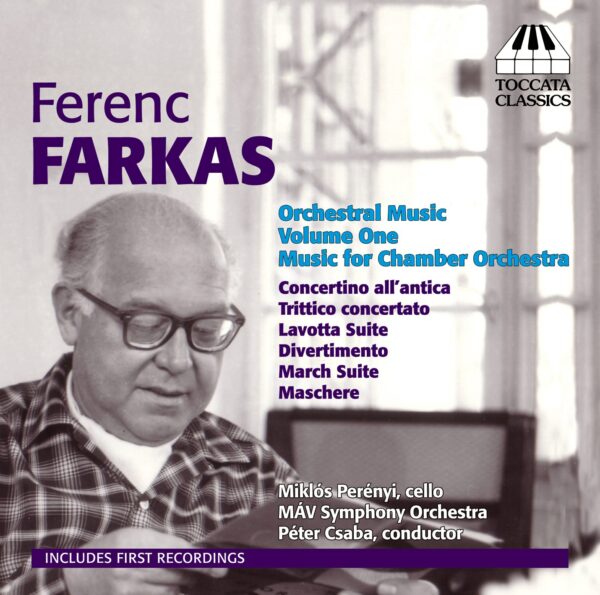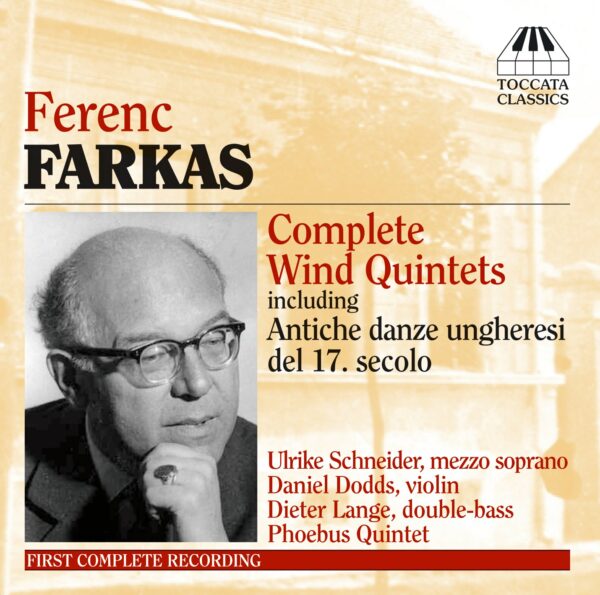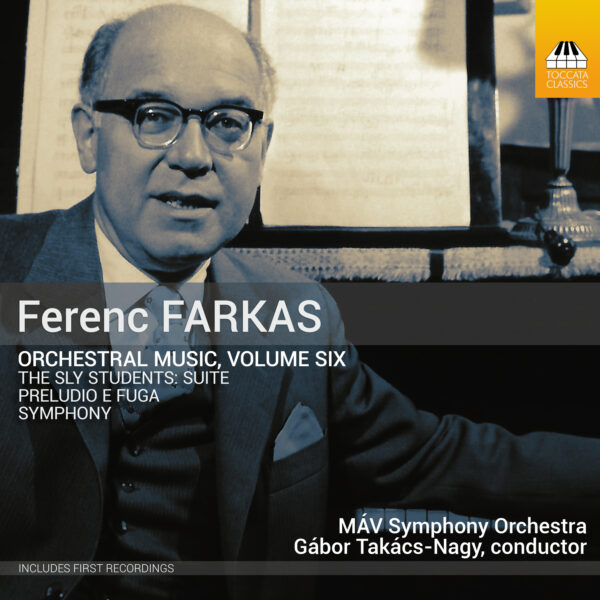Ferenc Farkas: Orchestral Music, Volume One
This first release in a series of recordings of orchestral music by the Hungarian composer Ferenc Farkas (1905-2000) highlights the characteristics that make his works so appealing: catchy tunes, transparent scoring, buoyant rhythms and a fondness for Baroque forms and folk-dances.
Miklós Perényi, cello
MÁV Symphony Orchestra
Péter Csaba, conductor
Listen To This Recording:
-
Divertimento for orchestra (1930)
- I Allegro leggiero
- II Allegro giocoso
- III Tempo di Minuetto
- IV Intermezzo
- V Allegro
- I Pastorale
- II Aria con variazioni
- III Giga
- I Ungarisch
- II Menuet
- III Marsch nach Pannonien
- IV Ungarisch
- V Im Wirtshaus
- I Il Capitano
- II Pantalone
- III Colombina
- IV Povero Pulcinella
- V Arlecchino
- I Allegro moderato
- II Passacaglia con dedica
- III Allegro vivace
- I Allegro moderato
- II Elegia, quasi lento
- III Allegro vivace
Concertino all’antica for cello and string orchestra (1964)
Lavotta Suite for chamber orchestra (1951)
Maschere for chamber orchestra (1983)
Trittico concertato for cello and string orchestra (1964)
March Suite for chamber orchestra (1947)





Fanfare Magazine :
‘…Farkas was a polystylist long before that became fashionable. He ranged from non-Schoenbergian atonality to bitonality, acerbic, Stravinsky-like songs to meltingly Puccinian operatic arias. …The neoclassical preference for terse statement figures into every movement on this album. …A sort of breezy, slightly bitonal “neoclassical lite” dominates the character of the Divertimento for Orchestra from 1930, though there are also touches of Hungarian folk motifs throughout, particularly in the finale. …The brash, French overture-like minuet that is its third movement is perhaps the most memorable thing in the work (with Respighi-like treatment of the winds once more in a finely contrasting central section), but the entire thing is a lightweight charmer. …[Trittico concertato:] Its three movements combine free tonality with neo-Baroque motifs and figurations. The central movement, a chromatic, moderately dissonant passacaglia, is the grimmest and most powerful thing on the disc. …[March Suite:] It’s better than 90 percent of the stuff I’ve heard written in a similar vein through the late 1940s and 1950s, presumably because the composer found the suit he was required to wear fit less stiffly than many of his contemporaries did.’
—Barry Brenesal, Fanfare Magazine
MusicWeb International :
‘It’s good to know that this disc is termed ‘Volume 1’, It is, in fact, a follow-up to an earlier recording of the complete Wind Quintets (Toccata TOCC0019) by Farkas. I look forward very much to the next instalment. If the performances and recordings are as good as this then we have quite a treat in store.’
—Gary Higginson, MusicWeb International